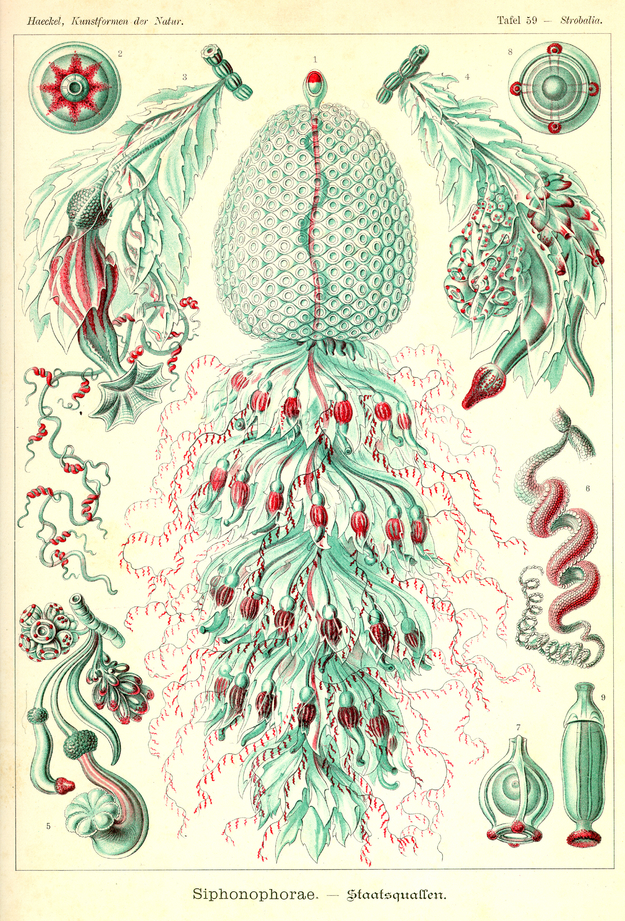The magnificent Siphonophora of this plate was found in 1881 in the Indian Ocean and was drawn, true to life, in Matura on the Southern tip of the island Ceylon. It is closely related to the European Forskalia as well as to Discolabe quadrigata shown on plate 37. The whole body, presented in natural size in Fig. 1, forms a swimming colony of medusae (Cormus) and is composed of several thousand individual animals, medusaic personae. Alive these individual animals are transparent, very sensitive and mobile; the biggest part of the vitreous, gelatinous, and very tender body is colourless and lightly bluish; individual parts of the personae are coloured in red (blood red to brown red). The complete colony consists of two main sections, the upper swimming body (Nectosom) and the lower feeding body (Siphosom). Labour division (Ergonomia), which is highly developed in all Siphonophores, has led to the conspicuous form division (Polymorphismus) of the many personae, that compose these peculiar pelagic animal colonies; the upper swimming body basically serves swimming locomotion, the lower feeding body is responsible for sustenance and procreation.
Translation of the original German introduction by Ernst Haeckel:
Phylum of the Cnidarians (Cnidaria); – Class of the (State Medusae); – Order of the (Magnificent Medusae).
Translation by VR Translators Bangalore
This is one of the 100 pop science biology illustrations that were published from 1899 – 1904 in Leipzig by Ernst Haeckel through Verlag des Bibliographischen Instituts.
We've scanned the original lithography at 1200dpi on the Epson A3 scanner of A3 scanner huren . You can download a 400dpi JPEG here.
